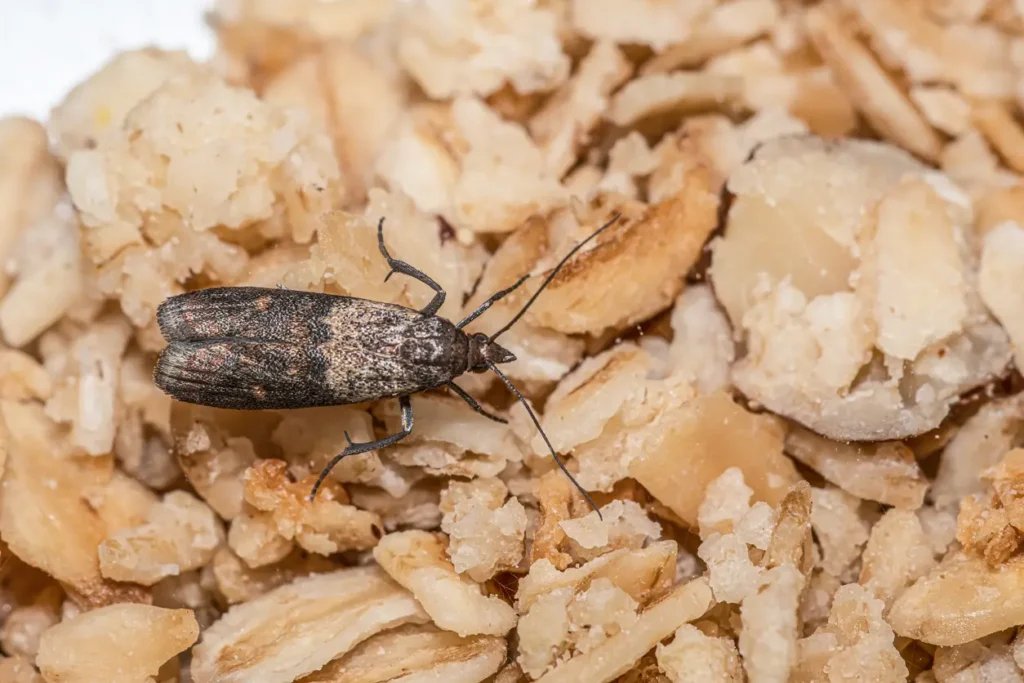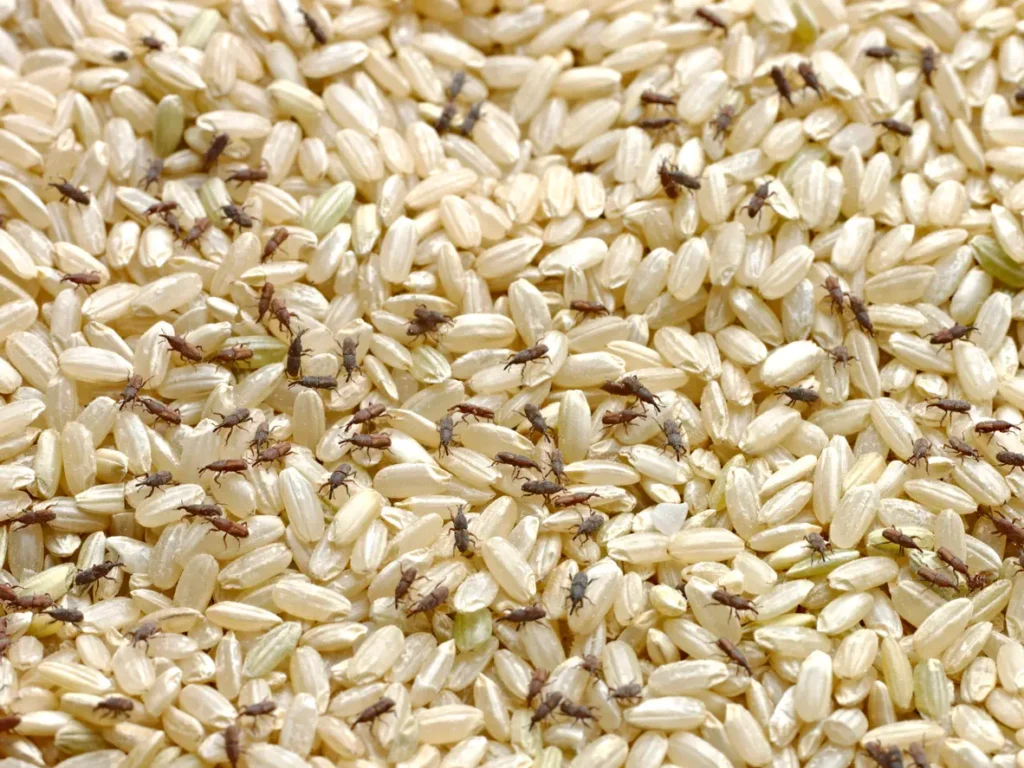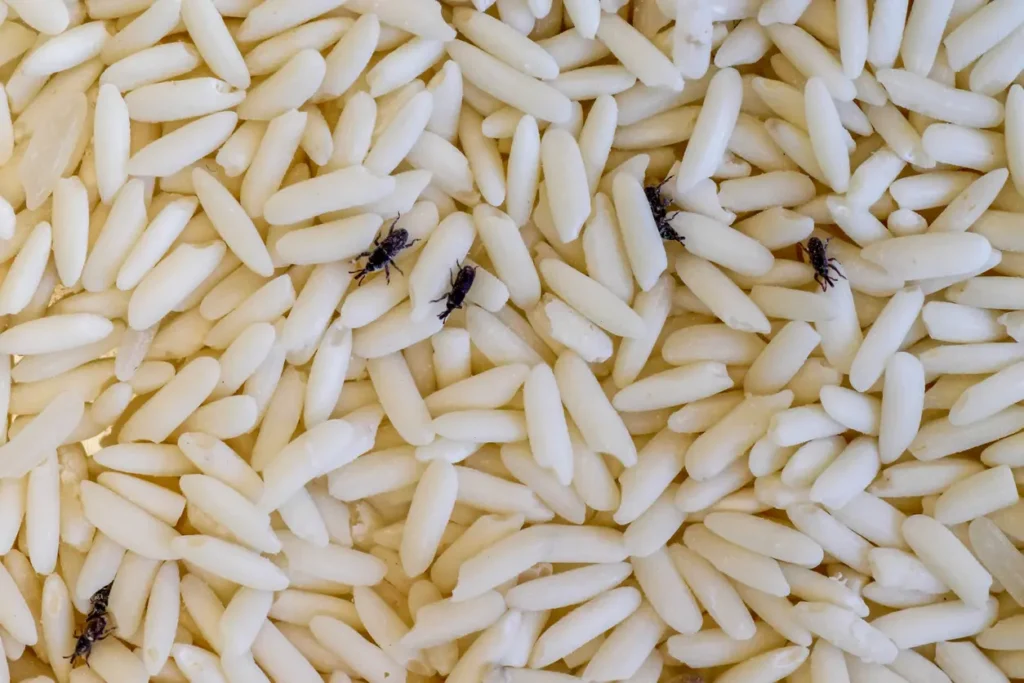
Pantry Pest Control in St. George, SC
In St. George, SC, kitchens reflect the traditions of small-town living—neighbors swapping recipes, shelves lined with home-canned preserves, and family gatherings that center around food. Known as the “Tea Capital of the World” and host of the annual World Grits Festival, this Dorchester County town carries a rich agricultural heritage. But alongside that heritage comes a persistent challenge: pantry pests.
From moths fluttering near ceiling lights to beetles crawling in flour bins, these insects can turn treasured pantries into stress points. In St. George’s humid Lowcountry climate, they don’t just appear—they thrive, quickly spreading through stored goods, contaminating groceries, and wasting time and money.
That’s where All U Need Pest Control steps in. We deliver pantry pest control in St. George, SC that is precise, discreet, and built for the realities of small-town kitchens and rural homes. We inspect, identify, eliminate, and prevent—ensuring your pantry stays clean, safe, and pest-free. Call 1-888-239-BUGS (1-888-239-2847) today for your free inspection.
Pest Control Services in St. George, SC

How To Get Rid of Pantry Pests in St. George, SC
Tossing out one bag of rice or flour doesn’t end an infestation. Pantry pests—moths, beetles, and weevils—lay eggs inside food products, and those eggs spread faster than most homeowners expect. In St. George, where homes often store bulk grains, canned vegetables, and locally grown products, pests find plenty of hiding spots.
A St. George-smart response involves five steps:
- Isolate and audit. Bag any questionable items; then check every dry good—flour, cereal, rice, pasta, cornmeal, dried fruit, nuts, spices, pet food, and bird seed.
- Purge strategically. Throw away anything with webbing, insects, pinholes, or unusual odors. Better to lose a bag now than risk losing a shelf later.
- Deep-clean the pantry. Empty cabinets, vacuum seams and corners, scrub with hot water, then dry completely. Don’t skip shelf pins, toe-kicks, or gaps near appliances.
- Break the life cycle. Use targeted applications and growth regulators to stop larvae from reaching adulthood, especially important in humid St. George summers.
- Re-package in secure containers. Save good food in airtight glass jars or heavy-duty plastic bins with gasket lids.
Even sealed packages from stores can carry pests inside. The key difference between a nuisance and a major infestation is how quickly you act.

Pantry Pest Treatment in St. George, SC
Our approach blends Integrated Pest Management (IPM) with methods tailored to St. George’s mix of historic homes, modern kitchens, and farmhouses. Treatments are effective, careful, and always safe for families and pets.
- Inspection & Identification. We identify species (moths, beetles, weevils), confirm infestation levels, and trace spread—from pantries to barns or feed rooms. We also consider storage habits unique to St. George, such as grits, cornmeal, and bulk flour for festival cooking.
- Interior Flush-Out. We apply precise, low-odor treatments in cracks and crevices, never across food. Pheromone monitors track activity and guide adjustments.
- Structural & Sanitation Corrections. We recommend fixes like switching to airtight containers, sealing cabinet gaps, replacing shelf liners, and improving airflow in older or raised homes.
- Follow-Up & Verification. We return within a set window to verify success, refresh monitors, and address any lingering hot spots before pests can rebound.
Our service is designed to not only eliminate pests but also prevent the next generation from taking hold.

Signs of a Pantry Pest Infestation in St. George, SC
Residents often don’t realize they have a pantry pest problem until multiple products are infested. Watch for these early signs:
- Moths in the kitchen. Small moths circling lights or fluttering near pantry doors.
- Webbing and clumps. Silk threads inside flour, cornmeal, or dried fruit.
- Tiny beetles. Crawling in sealed bags, across shelves, or near light sources.
- Strange odors. Food may smell musty, sour, or stale after larvae feed.
If you notice more than one of these, it’s likely the infestation has spread beyond a single bag or jar.
How To Check for Pantry Pests
Systematic checking prevents surprises.
- Empty one section at a time. Place items on a towel to detect crawling insects or fine debris.
- Sift flours and grains. Pour over a tray to catch larvae, silk, or clumps.
- Examine packaging seams. Look for small chew marks, holes, or silk strands.
- Check storage beyond the pantry. Feed rooms, utility closets, or garages may hide the source.
Bag and remove anything questionable. Photos help our technicians identify pests during inspections.

What Kinds of Pantry Pests Are There in St. George, SC?
Indian Meal Moths
The most familiar pantry pest, recognized by tan-and-copper wings. Adults don’t eat, but larvae thrive on flour, cereal, nuts, and dried fruit. In St. George homes, larvae can crawl far before pupating, making them tricky to eliminate without professional follow-up.
Merchant Grain Beetles
Flat, fast-moving beetles that slide into tiny cracks. They feed on rice, oats, and cornmeal—products that are often kept in bulk in St. George kitchens. Their speed makes containment challenging.
Flour Beetles (Red & Confused)
Small reddish-brown beetles that chew through weak packaging. They infest flour, crackers, pasta, and cereal, leaving cast skins and droppings behind.
Weevils (Rice & Granary)
Snouted beetles that grow inside whole kernels. They bore out, leaving pinholes and dust. Freezing bulk purchases like rice or cornmeal for 72 hours helps prevent infestations.

How To Prevent Pantry Pests in St. George, SC
Prevention must become part of your kitchen routine—especially in St. George’s humid climate where pantry pests flourish.
- Decant into airtight containers. Store flour, cornmeal, rice, and pet food in sealed jars or bins.
- First-in, first-out. Use older products before newer ones; avoid topping off containers until cleaned.
- Freeze vulnerable goods. Flour, rice, and nuts benefit from a 72-hour freeze after purchase.
- Clean regularly. Vacuum and wipe shelves monthly, especially seams and corners.
- Protect pet food and seed. Store in sealed bins, off the ground, away from pantries.
- Seal gaps and cracks. Caulk holes in cabinets, repair trim, and ventilate cupboards in older homes.
Consistent routines save time, money, and groceries in the long run.
Eco-Friendly Solutions
We focus on safe, eco-conscious methods that protect families while solving the problem. Treatments are precise, applied only in cracks and voids, never on food surfaces. Pheromone monitors help us make science-based decisions. Non-chemical practices like freezing, container upgrades, and sanitation are built into our plan so chemical use stays minimal.
Eliminate Your Pantry Pest Problem
Pantry pests are a common issue for homeowners, but they don’t have to take over your kitchen. If you notice insects in your stored food or suspect an infestation, it’s essential to take action before the problem gets worse.
At All U Need Pest Control, we offer fast, reliable service to eliminate pantry pests and keep them from coming back. When you call us, one of our technicians will be at your home within 48 hours to assess the situation and begin treatment. We offer flexible scheduling, including evening and weekend appointments, to meet your needs.
If you’re ready to get rid of pantry pests or want to schedule a free inspection, contact us at 1-888-239-BUGS or fill out our online contact form.
Location Contact:
419 N Cedar St Summerville, SC 29483
Get Directions for 419 N Cedar StSummerville, SC 29483 on Google Maps843-489-8818
Call All "U" Need Pest Control